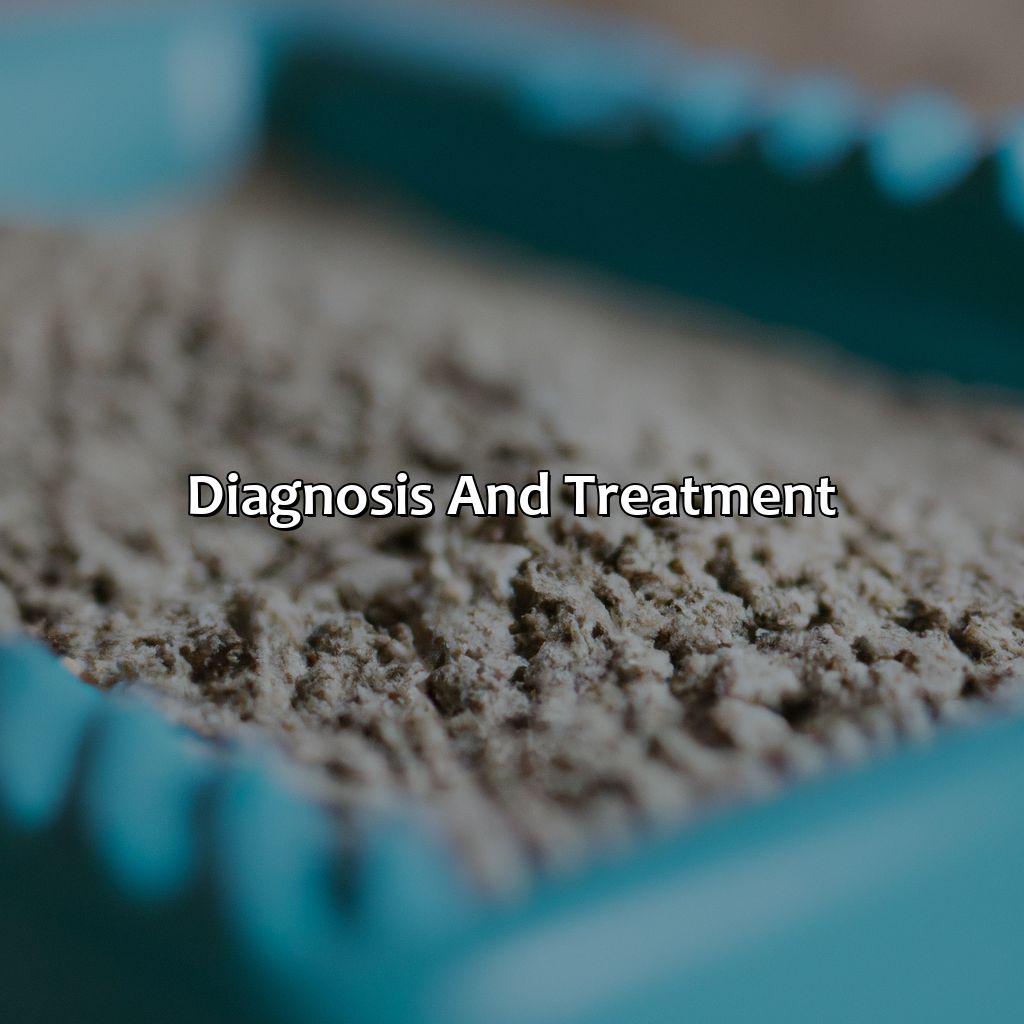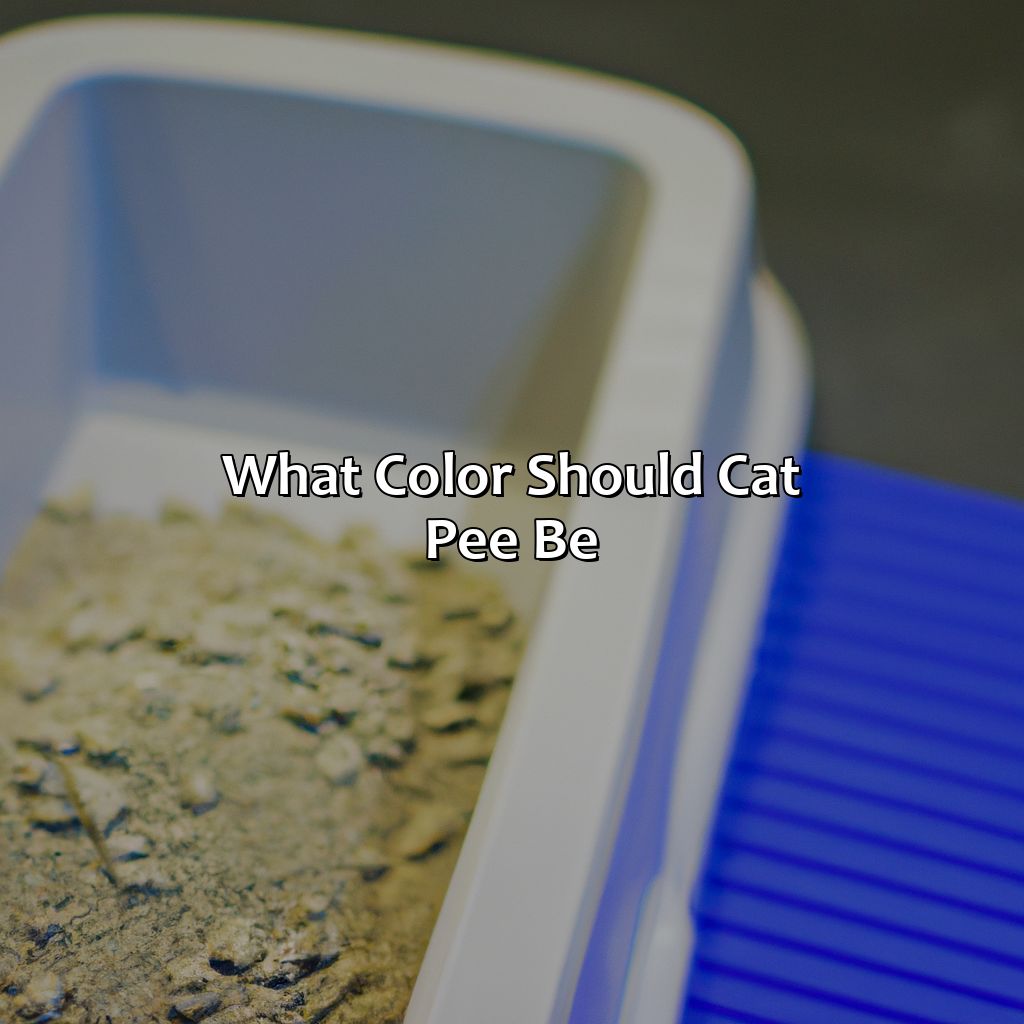Key Takeaway:
- Normal cat pee colors range from pale yellow to amber and honey hues, and are considered normal cat urine colors.
- Abnormal cat pee colors include red, pink, brown, green, blue, orange, cloudy, and foamy colors. When urine is discolored, it may be a sign of underlying health issues, such as urinary tract infections, liver disease, or kidney disease.
- If you notice a change in your cat’s urine color, it is important to seek veterinary care to determine the underlying cause and receive proper diagnosis and treatment. Prevention tips include ensuring that your cat drinks plenty of water and maintaining a healthy diet.
Normal Cat Pee Colors
Normal Cat Urine Colors: A Guide to Understanding Your Feline’s Health
When it comes to your feline friend’s health, monitoring their urine color is essential. Pale yellow to deep yellow is considered normal cat urine color. Amber or honey-colored urine may also be normal, but it’s important to stay alert for any sudden changes in color or consistency.
Cat urine can vary in its appearance based on several factors like hydration levels, dietary habits, and underlying medical issues. As a responsible pet owner, it’s crucial to keep an eye out for any signs of abnormality, including blood, cloudy urine, or an unusual odor.
Furthermore, seeking immediate veterinary consultation if you notice any unusual changes in your pet’s behavior or physical symptoms is essential. Catching any potential health issues early on can save your cat from a lot of discomfort and ensure their quality of life is high.
Overall, understanding the normal range of cat urine color is a critical aspect of feline health. By keeping an eye on your cat’s urinary habits, you can help them maintain optimal health and detect any potential issues early on. Remember, regular check-ups, a nutritious diet, and proper hydration are essential components of a happy and healthy feline life.
Abnormal Cat Pee Colors
As responsible cat owners, it is important to monitor their urine and notice any abnormal changes in color. Discoloration in cat urine can be an indication of an internal problem, such as liver disease, urinary tract infections or cancer. The varying shades of abnormal cat pee colors range from red, pink, brown, green, blue, and orange. Cloudy, foamy urine can also be a sign of medical concern. Knowing when to worry about cat urine color can potentially save your feline’s life.
Using techniques to detect cat urine discoloration, such as observation, odor, and urine color charts, can provide vital clues about your cat’s health. Learning these important signals can help you detect abnormalities early and receive timely medical intervention. Remember, any change in your cat’s bathroom habits warrants a conversation with your veterinarian.
Possible Causes of Abnormal Pee Colors
Abnormal urine colors can be caused by various underlying medical conditions that need prompt attention. The urine could change color due to dehydration, urinary tract infections, liver disease, kidney disease or feline lower urinary tract disease. Other possible causes include feline idiopathic cystitis, kidney stones, urethral obstruction, bladder cancer, urinary tract blockage, bladder infection, urinary incontinence and urinary tract inflammation. These possible causes of abnormal pee colors should be evaluated by a medical professional to determine the proper course of treatment.
The following are some possible causes of abnormal urine colors:
- Dehydration
- Urinary tract infections
- Liver disease
- Kidney disease
It’s important to keep in mind that these conditions can be serious, and must be treated by a licensed veterinarian. If left untreated, these conditions could exacerbate and worsen the situation.
It’s important to note that excessive urine output can be indicative of kidney disease, or a urinary tract infection. Both these conditions can change the color and consistency of urine. It’s important to note that while these two conditions are different, they can share some symptoms, which is why a visit to the vet is crucial.
A true history can be shared in which a cat was found to have a very dark-colored urine, which was ultimately linked to urinary tract inflammation. The cat had been exhibiting symptoms such as unusual vocalizations when using the litter box, and his urine had a foul odor. After being taken to the vet, it was discovered that he had developed inflammation of the urinary tract due to an infection and was treated promptly.
Diagnosis and Treatment

Photo Credits: colorscombo.com by Benjamin Miller
Detecting and Treating Abnormal Cat Urine
Cat urine can serve as an indicator of a cat’s overall health and wellbeing. Diagnostic tests such as cat urine analysis, tests on cat urine samples, and the detection of cat urine stains may help detect abnormalities in a cat’s urine. Treatment options for abnormalities in cat urine include the use of antibiotics, changes in diet, and prompt cleaning of the urine to avoid dehydration.
Understanding Cat Urine Crystals, Infections, and pH Balance
Cat urine crystals and infection can cause problems with a cat’s urinary system and may affect a cat’s overall health. The pH balance of a cat’s urine is also significant, as it affects the development of crystals and infections. Regular monitoring of a cat’s urine and prompt treatment of abnormalities is critical to maintaining a cat’s health.
Dealing with Behavioral Issues
Some cats may struggle with behavioral issues such as urinating outside of the litter box, causing frustration for their owners. These issues may have underlying health problems that need attention. Owners may consider consulting with a veterinarian to help determine the cause of the behavior and develop solutions to manage it.
Don’t Ignore the Warning Signs
If left untreated, abnormalities in a cat’s urine can lead to serious health problems. Blood in cat urine, frequent urination, urination in small amounts or on inappropriate surfaces, and urinating in sleep can all be warning signs of potential health issues. Don’t delay in seeking advice from a veterinarian to address these issues, as early detection and treatment can help ensure your cat’s continued health and happiness.
Prevention Tips
Preventing Discoloration in Cat Urine: Tips and Tricks
Cat urine discoloration can be concerning for pet owners. To prevent this issue, consider the following tips:
- Regularly clean your cat’s litter box to ensure they have a clean place to urinate.
- Provide fresh water for your cat to encourage hydration, which can help prevent urine discoloration.
- Feed your cat a healthy diet to promote overall urinary tract health.
- Monitor your pet’s behavior and health to address any potential medical issues before they can cause urine discoloration.
In addition, it is recommended to consult with a veterinarian to rule out any underlying health concerns.
It’s important to note that changes in diet or medication can affect the color of your cat’s urine temporarily. However, consistently discolored urine may be a sign of a more serious issue.
A true story to consider is that of a cat owner who noticed their feline companion was experiencing urine discoloration. After seeking veterinary care, the cat was diagnosed with a urinary tract infection and received treatment, leading to a full recovery.
By taking proactive steps and monitoring your cat’s health, you can prevent urine discoloration and promote overall wellness for your furry friend.
Five Well-Known Facts About What Color Cat Pee Should Be:
- ✅ Normal cat urine should be a pale yellow to amber color. (Source: PetMD)
- ✅ Any changes in color or odor may indicate a health issue, such as a urinary tract infection. (Source: VCA Animal Hospitals)
- ✅ Red or pink urine may be a sign of blood, which could indicate a serious medical condition. (Source: Cornell Feline Health Center)
- ✅ Dark brown or orange urine may be a sign of liver or kidney disease. (Source: Pet Health Network)
- ✅ Stress, diet, and certain medications can also affect the color and smell of cat urine. (Source: American Humane)
FAQs about What Color Should Cat Pee Be
What color should cat pee be?
Cat pee should be a pale yellow to amber color. Any other color may indicate a medical issue.
What does it mean if my cat’s pee is a different color?
If your cat’s pee is a different color than pale yellow to amber, it could indicate a medical issue. Red or pink urine could be a sign of blood in the urine, while dark yellow or brown urine could indicate liver or kidney problems.
Should I be worried if my cat’s pee is a different color?
It’s always best to consult with your veterinarian if your cat’s pee is a different color. They will be able to determine if it’s a normal variation or if it indicates a medical issue.
What should I do if I notice a different color in my cat’s pee?
If you notice a different color in your cat’s pee, schedule an appointment with your veterinarian. They will be able to perform a physical exam, test the urine, and determine if there is an underlying medical issue.
Can diet affect the color of my cat’s pee?
Yes, diet can affect the color of your cat’s pee. Certain dyes in cat food may cause a change in urine color, but it’s always best to consult with your veterinarian if you notice a different color in your cat’s pee.
Is it normal for cat pee to have a strong odor?
It’s normal for cat pee to have an odor, but if the smell is particularly strong, it could indicate a medical issue. Schedule an appointment with your veterinarian if you notice an extremely strong odor.





